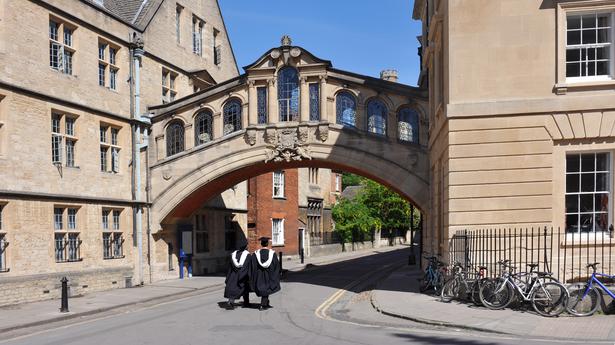
A Harvard branch in India, prospects and challenges
The Hindu
It will be worthwhile for policymakers to look at the experience of other countries for positive and negative lessons
India, after half a century of keeping its higher education doors closed to foreigners, is on the cusp of opening itself to the world. The traditional orientation to swadeshi that has characterised much of Indian thinking, at least in higher education, is changing. The wide-ranging National Education Policy (NEP) 2020 promises higher education reforms in many areas, and internationalisation is prominent among them. Among the underlying ideas is to strengthen India’s “soft power” through higher education collaboration, bringing new ideas and institutions from abroad to stimulate reform and show “best practice”, and in general to ensure that Indian higher education, for the first time, is a global player.
An example of the new thinking was part of British Prime Minister Boris Johnson’s April 2022 visit to India, which featured a visit to the innovative Gujarat Biotechnology University and strengthening the United Kingdom-India academic collaboration. The Gujarat Biotechnology University is an example for new models of international academic partnerships emerging in India. It was established by the Department of Science and Technology of the Government of Gujarat in partnership with the University of Edinburgh, which assists the Gujarat Biotechnology University in developing strategies with regard to teaching, learning, research and innovation, and quality assurance, among others. This is a unique model in the present Indian academic context as there are many regulatory hurdles that still exist in the country with regard to international academic partnerships, which includes the operation of international branch campuses.
Currently, India does not allow the entry and the operation of foreign university branch campuses. The NEP 2020 was a turning point for the entry of foreign universities as it recommended allowing foreign universities ranked in the “top 100” category to operate in India — under somewhat unrealistic conditions. In February 2022, Finance Minister Nirmala Sitharaman, in her Budget speech, announced that “world-class foreign universities and institutions would be allowed in the planned business district in Gujarat’s GIFT City” (or the Gujarat International Finance Tec-City) and they would be free from domestic regulations to facilitate availability of high-end human resources.
The Minister’s statement was a marked departure from the NEP 2020 recommendations that allow only the “top 100” category to operate in India. A similar accommodating stance could be observed in the (written) reply given by the Minister of State for Education, Dr. Subhas Sarkar, in the Lok Sabha in March. He noted that two foreign institutions, from France and Italy, had expressed interest in setting up campuses in India. However, the Italian institute “Istituto Marangoni”, is not a university. It was reported that in April 2022, the University Grants Commission (UGC) formed a committee to draft regulations to allow foreign institutions in the “top 500” category to establish campuses in India — realising that more flexibility was needed.
Establishing branch campuses of top foreign universities is a good idea as this will bring much-needed global experience to India. But is this practical? And will overseas universities be interested? Globally, branch campuses, of which there are around 300 now, provide a mixed picture. Many are aimed at making money for the sponsoring university — and this is not what India wants. And some have proved to be unstable. A recent example in this regard is the ending of the decade-long partnership between Yale University and the National University of Singapore in running the Yale-NUS College in Singapore.
There has been modest growth of various forms of partnerships between Indian and foreign institutions. The joint PhD programmes offered by the Indian Institute of Technology Bombay-Monash Research Academy and the University of Queensland-Indian Institute of Technology Delhi Academy of Research (UQIDAR), both with Australian partners, are some examples. Another example is the Melbourne-India Postgraduate Academy (MIPA). It is a joint initiative of the Indian Institute of Science Bangalore, the Indian Institute of Technology Madras, the Indian Institute of Technology Kanpur and the Indian Institute of Technology Kharagpur with the University of Melbourne. MIPA provides students with an opportunity to earn a joint degree accredited both in India and Australia: from the University of Melbourne and one of the partnering Indian institutions. These partnerships suggest that India could offer opportunities for international branch campuses as well.
International branch campuses, if allowed, could function as a structurally different variant of India’s private university sector. The establishment of foreign university branch campuses would encourage competition mainly between existing private universities and foreign branch institutions, but would have less impact on the public universities. Branch campuses, if effectively managed, could bring much needed new ideas about curriculum, pedagogy, and governance to Indian higher education — they could be a kind of educational laboratory.











